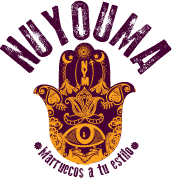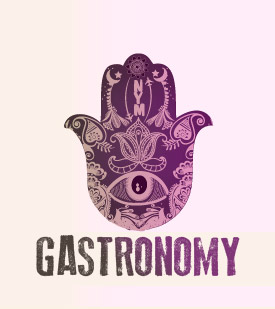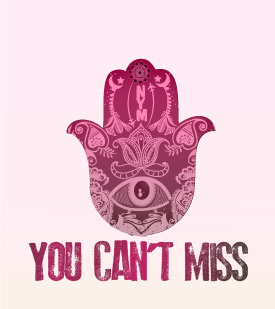ERG CHEBBI DESERT
When you go there, you will know what real authenticity is about. Have you ever imagined being in a place where you can’t hear any sound you’re used to? Only the silence… Have you ever imagined a landscape so huge that you can’t see the end of it? Have you ever seen so many stars that you feel as you were floating in space? There are no words to describe its wideness or the sensations it’ll bring to you. Because there’s no place that would be able to make you feel as much and would be able to leave you without a breath.
ESSAOURIA
Essaouria is a town located in the Atlantic Coast of Morocco. It’s a fishing town, very traditional and with a lot of history. It’s also a town for artists, and it’s able to awaken hidden emotions. It has the ocean breeze, the hustle and bustle of the port, little alleys that show every type of art, paintings, craftwork, smells of leather of bags and wallets, incense, spices…
The wallet town appears from the ocean, its cannons heading towards the horizon. It’s a city for believers and it has a unique aura, that welcomes you and it’s able to relax you with its smells. You can enjoy the treasures of the sea that are grilled in the restaurants by the ocean. Seafood is brought directly from the sea to the kitchen and eaten by those who are attracted to the smell.
Essaouria is known for surfing, kitesurfing and windsurfing. The wind and the Atlantic wash over the town and its beaches are the perfect place to practise those sports. Phoenicians were the ones that founded Essaouria in the seventh century before Christ. Afterwards, Romans conquered in middle Ages and Portugula was the one who named it as Mogador. After 1765 Sultan Sii Mohammed Ben Abdel-lah of the Alaoui dynasty built the town as we know nowadays. Its medina was declared Human Heritage Cite in 2011 by UNESCO. Walking through its little alleys is like travelling in time. Do you dare to do it?
MARRAKESH
Marrakesh is a city of contrasts and really exotic. It is located in the centre of Morocco and it was the former capital city of the country. Marrakesh has been conquered by different nations and it has been built as a city of surprises because of its multicultural nature. It is nicknamed as the Southern Pearl. Almoradives brought water through a system of wells, Almohads built the breathtaking Koutubia, Marinids conquered in the thirteenth century, Saadi left the famous tombstones and, finally, Alawites made the Menara Gardens. Marrakesh offers the most amazing experience and the most sincere welcome.
The Southern Pearl makes you want to get lost in its Medina, enjoying the never ending offers that will captivate you and will make you want to watch and observe all the products; from presents, to smith’s works and spices. Getting lost in the souk is a unique experience! But Marrakesh has also a Western character: the New Marrakesh, which has plenty of restaurants, bars, malls and cosmopolitan people.
In the evening, the city offers a splendid view. The sun, the main character of the landscape, sets while the colours of the sky and the buildings get mixed. That’s when it begins another adventure: walking around Djemaa el fna square. The square is the main attraction of the city and one of the most crowded of the world. You will feel like in wonderland when you experience the nightlife in Marrakesh. There are millions of stories to discover: stories of fortune tellers, listening to the sound of drums under the moonlight, seeing animals from different parts of Africa, snakes charmers, games, dances, food stands…Djemaa el fna offers all of that and more. You are the only one who can experience it.
CASABLANCA
Morocco is a country of contrasts. Casablanca is the business centre of the country and also a reflection of these contrasts. Casablanca is a cosmopolitan city similar to the Western ones. It shows you the economics evolution of the country. It is not as exotic as other towns, but it has dynamism and it is full of surprises. In Casablanca industry and art share the same location. The most important landmark of the city is the Hassan II mosque. The mosque is located by the ocean, it fusions with the colours of the sea. This mosque is one of the biggest of the world. You will be amazed by this admirable masterpiece. Its doors are open to non-Muslim and there are guided visits on Fridays and days of prayers.
FEZ
Fez is located in a privileged spot in Morocco: between the coast and the desert. It is one of the most fascinating places in the world, which attracts everybody. It is the imperial town of the country, with a Medina that makes you want to get lost in it. Fez is constantly crowded and it is a labyrinth of surprises, presents, smells, colours, emotions and feelings. Fez is definitely an impact. Its medina, registered World Human Heritage by UNESCO, will captivate you with its palaces, madrasas, stands, restaurants and souks. That’s why the town is like an open museum, a living one actually, which changes constantly. It’s called the Green City because that’s the colour of Islam and Fez is the spiritual capital of Morocco. An authentic city!
OUARZAZATE
Ourzazate is Berber for “no noise”. It is located in the South of the country and at the entrance of Sahara Desert. Long time ago it was a crossing-point for the commercial caravans that went to North-Africa and then to Europe. It is a much quieter town than others in Morocco; its name does it justice. Ourzazate has movie-like landscapes and it is built between Draa, Dadés and Ziz valleys. It has got a unique charm because of the fusion of greenish colours of trees and russet of the Kasbah. And that authenticity has been the reason to become the set for multiple films and studios.
It is really easy to fall in love with the mirage at the entrance of the desert and the oasis of a thousand palm trees… A place to fall in love with!
CHEFCHAOUEN, THE BLUE CITY
Chefchaouen, also Xauen, it’s a small inland town in the North West of the country, near Tetuan. It was founded in the fiftieth century after being an old Berber village. The medina is made by many alleys and small blue houses that are set on the slop of the valley.
Chefchaouen is the most beautiful town of the Rif Mountains and it still keeps its ancient traditions and the laid-back way of life of a small community. There you can find the ghomara, an ethnic group with distinctive attires, especially the women’s: stripped skirts and pompom straw hats.
You will feel as if you were time travelling when you walk from the main square of Chefchaouen, Uta el Hamman, through Kebir Mosque and to the historical centre.
JADIDA, THE NEW
Jadida, also El-Yadida, which means “the new” in Amazigh, is a port city on the Atlantic coast 100 kilometers south from Casablanca with 145,000 inhabitants. It was founded in 1513 by Portugal, and that’s why its landmarks are Portuguese and not Arabic. In the eighteenth century sultan Mohammed the Third retook it and changed its name. He also extended it and built a huge mosque, whose minaret was used as a lighthouse for centuries. Besides the Portuguese Fortified City (which was registered as a UNESCO World Heritage Site), the Arabic medina, its beach and its port, Jadida has another hidden treasure: the Portuguese Cistern, a medieval warehouse where Orson Welles’ Otello was filmed.
MEKNES, THE CITY OF THE HUNDRED MINARETS
Meknès is located in Middle Atlas and it’s one of the Four Imperial Cities of Morocco (the others are Fes, Marrakesh and Rabat). It became the sultanate’s capital in 1675. Its origins go back to the Second Century b.C when the region was taken by Roman Empire. A Berber tribe known as “Meknassa” settled there centuries before it was an ancient military fortification and the city started growing.
There remains the magnificent wall of 40 kilometers from its golden age as a capital city, as well as a huge number of Mosques (that’s why it’s nicknamed as “hundred minarets”), the mausoleum of sultan Mulay Ismail, and the doors of Bab El Mansur (the biggest one in North Africa), Bab Berdain and Beb El-Jemis.
RABAT, THE CAPITAL CITY
Located on the Atlantic coast, the capital of Morocco is the second most inhabited city of the country, after Casablanca, and it has over 1,630,000 people. It was founded in the twelfth century by the Almohad as a Kasbah (military fortress), even though it had been a crucial Phoenician village, a part of Roman empire and a Berber settlement.
The capital of Morocco, residence of the King, is also the city of business, international festivals and universities. Important landmarks remain from its Almohad past, such as the Hasan Tower or the Kasbah, both of them from the twelfth century. The social and economic movements that will lead to the future of the country are also emerging from there.
TÁNGER, THE CITY OF THE ARTISTS
Facing the strait of Gibraltar, Tangier is an open city to the Atlantic and the Mediterranean where there are over a million inhabitants. Tangier has a multicultural past as the capital of the Alawite Empire and an historic settlement for the Muslim, Christian and Jew community. The painter Delacroix fell in love with it as well as other artists, from Matisse to Jack Kerouac and also the Rolling Stones.
The ancient medina is the main attraction for tourists who want to live a unique experience: going into through the imperial entrances, walking to the Petit Socco, or the Big Mosque and seeing Tangiers that are having a cup of tea on the street while they play the backgammon.
TAROUDANT, THE LITTLE MARRAKESH
This inland city located on the valley of the Sous River keeps the identity of a fortress and a town that appeared from nowhere. Taroudant, that is located south of the country and has 65,000 inhabitants, started as a market town for the caravan route. In the sixteenth century it became the capital of Saadians, and it was back then when the Great Mosque and its impressive wall were built. Precisely the wall gave it the nickname “little Marrakesh” because it’s really similar to the Red City’s but smaller.
Taroudant has not one, but two lively souks with craftwork stands; there also are fruit, spice, gold, knives, clothes and slippers stands. You can even find hen, sheep or cats. They appear every morning and vanish, magically, at noon.
TETOUAN, THE WHITE DOVE
The city of Tetuan is located 40 kilometres from Ceuta, near the coast and slightly higher than the sea level. There are about 350,000 inhabitants. Tetuan reflects its Andalusian past, when the Muslims thrown back by Spain during the sixteenth century built little white houses that gave the nickname “white dove” to the city.
In the old medina, which is declared Human Heritage by UNESCO, the same routine takes place every day: since ages before, artisans and merchants have been offering their products while old men have a cup of tea on the street and water sellers work.
A little trick to not get lost is looking at the floor. If there are three paving stones, it’s a main street, if there are only two, it’s a non-dead-end street, and if there are no paving stones…you’ll have to keep walking.
MERZOUGA, THE ENTRANCE OF THE DESERT
Merzouga is a small village located south 20 kilometers away from the frontier with Algeria and is also the entrance to the Big Desert. That’s the reason why it’s such a popular place among the tourists who want to experience Sahara, a part from its beauty.
Although it seems incredible, in Merzouga you can find lots of water: not far from the village there is the famous Ayet Srji Lake, a fresh water reserve where you can see flamingos and other birds as well, and presents a different picture from the dry landscape that surrounds it. Furthermore, not far from the lake the dangerous Erg Cheebi dunes begin. They are the biggest of Morocco, where big groups of dromedary set up a beautiful picture and the sunset seems a movie especial effect.
In the surroundings of Merzouga you can find a lot of animals, such as lizards, hedgehogs and desert foxes.
RISSANI, THE ROUTE TO TIMBUKTU
The small town of Rissani, capital of the Tafilalet region, is located near Sahara desert full of palm trees and it was the place where the Alwaite dynasty was born, in the seventeenth century, to which the current King of Morocco belongs.
For ages, this town of 21,000 inhabitants was the last stop in Moroccan territory for the dromedary caravans that were heading to Timbuktu. As well as Mezourga, it is currently a meeting point among travelers who want to get to know the desert.
The runes of the ancient Berber city of Sijilmassa remain in Rissani, who it became rich during this period taking advantage of the business relationship with Mali.
DADES, THE ROUTE OF A THOUSAND KASBAH
The valley of Dadès is located in the High Atlas and it reaches towns like Ouarzazate and Tighir. It is the settlement for Berbers, and it’s known for the breathtaking nature landscapes, which are green and lush by the river but they get drier as you move away. The most spectacular feature is the gorge. There are little rural communities over the valley and runes of the ancient fortresses that Berbers built to defend themselves, and they are the reason the valley is nicknamed as “of a thousand kasbahs”.
The driving route gives you the chance to discover the variety of landscapes (snowy mountains, rocky valleys, forests and cliffs) and also the traditional lifestyle of these communities that will welcome you with an incredible hospitality.
THE MIDDLE ATLAS, THE MOROCCAN SWITZERLAND
The Middle Atlas is a mountain about 350 kilometers of length that is located between Rif and High Altas, it is sort of parallel to the coast, and its beauty takes after the alpine landscapes. There, travelers find forests, lakes, little houses and even a ski resort, totally different from typical Morocco with dunes and dromedary.
In the Mittdle Atlas there is the most famous lake of Morocco, the Aoua Dait, surrounded by forests and the big Ifrane National Park, a paradise to hikers and nature-lovers. Hundreds of species inhabit the park, among them, variety of birds and butterflies, and also the Gibraltar monkey, an endangered primate.
HIGH ATLAS, THE AFRICAN CAUCASUS
The range of High Atlas is the highest of Morocco and all North Africa, and it has different snowy summits. Its landscape reminds of the Alps or Caucasus. Its highest summit, Toubkal (4,167 meters) can be seen somedays from Marrakesh, which is located just 60 kilometers away. The climb to the top of mount Toubkal is achievable for anyone in good shape, but only with an experienced guide.
The Toubkal National Park is named after this mountain, and it is the perfect place for some mountain tourism. There live weird animals such as the Barbary sheep or the Schokari Sand Racer and also otters, birds, Jackals, wild felines…
ZAGORA, THE LIFE IN THE DESERT
This southeaster town is located near the frontier with Algeria, and traditionally has been the passage for the caravans that were headed to the heart of Africa, and that’s how it is written on countless of sigs that indicate how far are we from Tombuctu (by camel, of course). The modern town was founded in the French colonial ages as an administrative center, but the zone had been inhabited centuries before and it was a prosper region thanks to salt caravans, slaves and gold that went through it.
In Zangora, the dryness of the landscape and the weather contrasts with the joyful people, the beautiful traditional buildings and with the delicious food. Not only the souk and the Jewish quarter are the most incredible landmarks, but also the ksars- small fortress towns- of its surroundings. From there, journeys by 4×4 or by dromedary give the chance to get to know the hard lifestyle in the desert.







